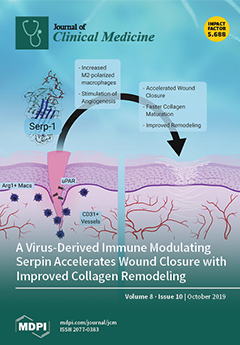Purpose: The effects of exergaming-based physical activity (PA) interventions on preschoolers’ health outcomes and cognition remain largely unexplored. Therefore, we conducted a randomized controlled trial to discern the effectiveness of a home-based educational exergaming intervention on preschoolers’ energy expenditure, fitness, body mass index,
[...] Read more.
Purpose: The effects of exergaming-based physical activity (PA) interventions on preschoolers’ health outcomes and cognition remain largely unexplored. Therefore, we conducted a randomized controlled trial to discern the effectiveness of a home-based educational exergaming intervention on preschoolers’ energy expenditure, fitness, body mass index, and cognition. Methods: Participants were 32 preschoolers (16 girls; 59.4% Asian; M
age = 4.72, SD = ±0.73) recruited from the Twin Cities area in Minnesota. During baseline testing, we measured preschooler’s daily energy expenditure (EE), cardiovascular fitness, body mass index, and cognitive flexibility using validated instruments. Participants were then randomly assigned to one of two conditions: (1) the exergaming intervention condition; or (2) control condition. The intervention program requested children participate in home-based educational exergaming using the LeapTV gaming console for at least 30 min/session 5 times/week. The control condition asked children to maintain regular PA patterns without any exergaming gameplay. Each condition lasted 12 weeks. We conducted identical outcome assessments for all children at baseline and post-intervention. Results: Analysis of covariance with repeated measures yielded significant time x group interaction effects for cognitive flexibility, Wilks’ Lambda = 0.81,
F(1, 29) = 6.98,
p = 0.01,
η2 = 0.19, suggesting children in the exergaming group demonstrated significantly greater increases in cognitive flexibility as compared to those in the control group over time. There were no significant differences for time x group changes between the two groups for EE, Wilks’ Lambda = 0.92,
F(1, 29) = 2.29,
p = 0.14,
η2 = 0.08; cardiovascular fitness, Wilks’ Lambda = 0.96,
F(1, 29) = 1.07,
p = 0.31,
η2 = 0.04; and BMI, Wilks’ Lambda = 0.99,
F(1, 29) = 0.05,
p = 0.82,
η2 = 0.01. However, our data did suggest a marginal effect of time for EE, Wilks’ Lambda = 0.89,
F(1, 29) = 3.26,
p = 0.08,
η2 = 0.08, indicating that children’s daily EE increased from baseline to post-intervention. Conclusions: Home-based educational exergaming may positively impact cognitive flexibility in preschoolers. Studies with larger sample sizes in multiple geographic locations are needed, with our study suggesting a longer intervention period might also be warranted.
Full article






